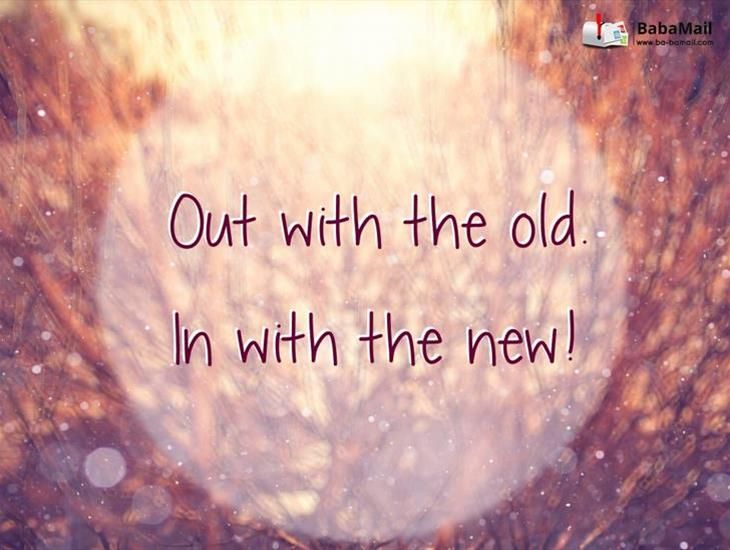Embracing Change: Exploring the Meaning and Applications of “Out with the Old, In with the New”
“Out with the old, in with the new” is a familiar proverb that transcends cultures and generations. It encapsulates the human desire for progress, improvement, and embracing fresh beginnings. This article delves into the meaning of this proverb, explores its application in various aspects of life, and offers practical tips for navigating change effectively.
The Essence of the Proverb
On the surface, “out with the old, in with the new” suggests discarding outdated practices, possessions, or ideas in favor of something novel and potentially better. However, its essence extends beyond a simple act of discarding. It signifies:
- Growth and Evolution: Life is a continuous process of learning and evolving. Embracing the new allows for growth and the incorporation of fresh perspectives.
- Letting Go: Attachment to the past, whether habits, possessions, or even outdated beliefs, can hinder progress. Letting go creates space for new experiences and opportunities.
- Renewal and Revitalization: Just as seasons change, introducing new elements into our lives can bring a sense of renewal and revitalize our approach to things.
Applications Across Life’s Palette
The proverb’s message finds relevance in various aspects of life:
- Personal Growth: “Out with the old” could mean replacing negative self-talk with positive affirmations, breaking free from unhealthy habits, or pursuing new learning opportunities. “In with the new” signifies adopting behaviors and habits that contribute to your well-being and growth.
- Career Advancement: The ever-evolving job market requires continuous learning and adaptation. Upskilling, exploring new technologies, or even venturing into a different career path could be ways to implement “out with the old, in with the new” in your professional life.
- Relationships: As we grow and evolve, so do our relationships. Letting go of toxic relationships and embracing new connections that foster positive growth exemplifies the proverb.
- Habits and Routines: Re-evaluating daily routines and incorporating new healthy habits like exercising or meditating could be a way to refresh your lifestyle.
- Material Possessions: Decluttering and letting go of unused or outdated possessions creates space for new things you might truly value. It also encourages a shift towards experiences over material wealth.
Making Change Work for You
Embracing change isn’t always easy. Here are some tips to navigate the process effectively:
- Start Small: Overwhelming change can be counterproductive. Begin with small, manageable steps that gradually lead to your desired outcome.
- Identify Your Goals: Clarity on what you want to achieve with the change will provide direction and motivation.
- Embrace the Discomfort: Change often involves stepping outside your comfort zone. Acknowledge the discomfort as a temporary hurdle and focus on the potential benefits.
- Seek Support: Confide in friends, family, or a therapist who can provide encouragement and guidance as you navigate change.
- Celebrate Milestones: Acknowledge and celebrate your progress, no matter how small. This reinforces positive change and keeps you motivated.
Beyond the Literal: The Proverb’s Deeper Meaning
“Out with the old, in with the new” isn’t just about discarding the past. It’s about creating a balance between honoring the valuable lessons learned from the past and embracing the possibilities that the future holds.
Change is a constant in life. By applying the wisdom of this proverb, you can approach change with an open mind, embrace personal growth, and create a life that continuously evolves and thrives.
FAQ: Frequently Asked Questions About “Out with the Old, In with the New”
-
What are some examples of “out with the old” in everyday life?
- Replacing sugary drinks with water.
- Decluttering your closet and donating unused clothes.
- Replacing negative self-talk with positive affirmations.
- Breaking free from a toxic relationship.
-
What are some examples of “in with the new” in everyday life?
- Learning a new skill, like a language or musical instrument.
- Taking up a new hobby or sport.
- Pursuing further education or professional development.
- Embracing a new mindfulness practice like meditation.
-
Is it always necessary to completely discard the old? No. The proverb doesn’t advocate for blind rejection of the past. The goal is to identify what no longer serves you and make space for positive new elements, while still valuing valuable lessons learned from the past.
-
How can I avoid feeling overwhelmed by change? Start small and focus on gradual progress. Break down large goals into smaller, manageable steps.






More Stories
Is there a lifetime limit on epidural steroid injection?
What is Section 20 of the Motor Accident Insurance Act (Queensland)?
Where to Watch USMNT vs Jamaica National Football Team